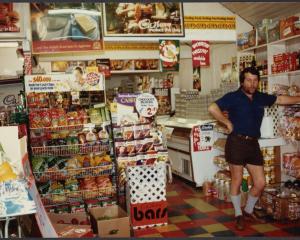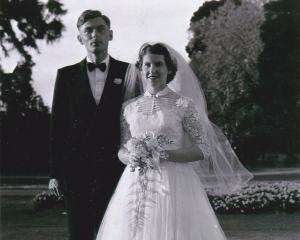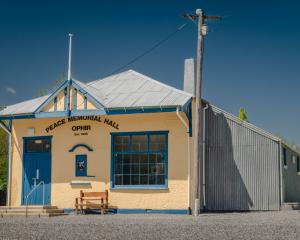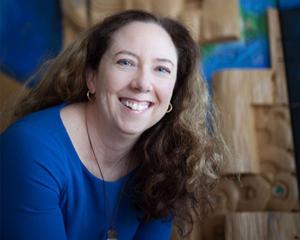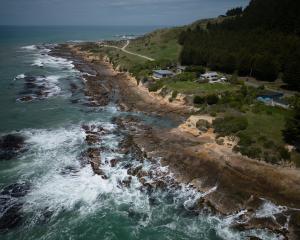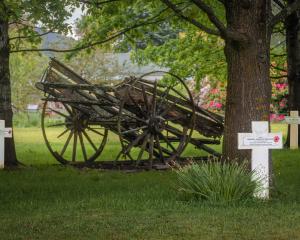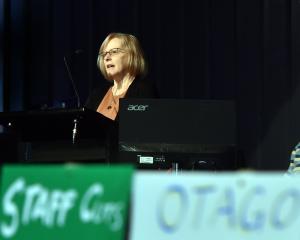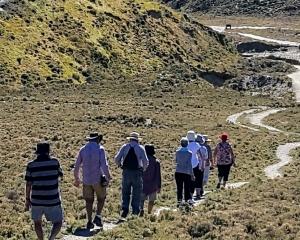In The Lives of Colonial Objects, even the seemingly ordinary can offer exceptional insights into New Zealand's cultural fabric.
The following extract from the book rummages through a medicine chest and uncovers near-murderous machinations.
Octavius Harwood did not write in his usual diary on 25 October 1838.
It was the first time, in six months as clerk at the Weller Brothers' Otakou whaling station, that he had not jotted just a few terse words on the wind, the whales or perhaps a ship's arrival.
This might otherwise be unremarkable, but on this occasion Octavius had a rather more delicate task: to document his employer Edward Weller's brutal assault on one of the station's most valuable members, Dr Joseph Crocome.
He took up a new notebook and penned the following account:
‘‘October 25th, 1838 [Weller] took a bludgeon from under a jacket laying alongside of him ... and deliberately made a blow at the Ds [Crocome's] head, which completely stunned him and cut his head severely, he then repeated the blow a second time and would have killed him when I interfered ... The D. fell dead, and staggered down bleading profusely ...
''He [Weller] then appeared to consider what he had done and enquired what was to be done ... I recommended cold water . . . he [Weller] then said he had better bleed him, which he did. By that time Mr P came in and assisted the bleading ... he [Weller] then enquired of him [Crocome] what had better be done if he got any worse.
''The D. recommended cold applications to the wound, aperient [opening, or laxative] medicine and bathing feet in warm water. Mr P. and myself then washed his head and shaved the hair off round the wound ... about 2 inches in length and right in to the bone ...
''We then put sticking plaster to keep the wound together and put him on the sofa very unwell, took no refreshment of any sort whole day except water. At 4 gave him Does [dose] of opening medicine.''
Harwood's testimony makes clear that young and hot-headed Edward Weller, suspecting Crocome of inciting doubt about his authority as manager of the whaling station, had made a premeditated but promptly regretted assault. It is rather wonderful that Weller then had to ask his victim how he should help him - but Crocome was then the only doctor in all of Te Wai Pounamu, or the South Island.
Even a little medical knowledge meant much in this distant edge of empire, despite, and even in some ways because of, the very patchy nature of that knowledge: when all doctors were more or less faith healers, who could but believe in them?
As Robert Fulton observes, ‘‘Pathology could hardly be said to exist, the very meaning of disease and the explanation of its processes was a sealed book . . . Can one picture what [Crocome's] difficulties were, and what his limitations?
‘‘Oxford-educated Harwood had gained the rudiments of medical training as a novice first mate on his voyage out to Sydney the year before, and now he followed Crocome's advice: the good doctor received regular doses of laxatives over the next few days.
This, in fact, was long-standing best medical practice.
As the apocryphal but powerful story goes, when the celebrated physician Hermann Boerhaeve died in 1738 a book in which he had reputedly set out all the secrets of medicine was opened; its pages were empty save for the very treatment Crocome self-prescribed:
‘‘Keep the head cool, the feet warm, and the bowels open.''
Crocome revived, left, understandably, and later returned to Otago to work for the Wellers' rival, Johnny Jones.
Harwood could call on Crocome for especially serious cases but he was now the makeshift physician to the whaling station, and to the Maori communities in which it was embedded. Harwood relied, as Crocome had before him, on the contents of the Weller Brothers' medicine chest.
Today the chest sits propped against a wall of the Otago Peninsula Museum. A solid wooden box, about 50 by 30 centimetres, its heft is tolerable for one person, though much more comfortable for two.
A sheet of cracked glass now covers the chest, under which its contents are arrayed in cork-stoppered glass bottles, each in a small compartment.
These surround a larger space filled with a jumble of string-bound paper packages, and a belt-like leather object which, a typed list tacked to the lid describing the chest's ‘‘original contents'' suggests, must be a truss.
The chest embodies the state of European medical knowledge in the 1830s. Its central compartment holds basic paraphernalia such as splints and dressings for binding people back together after accident or surgery.
The truss was used to treat hernia, caused perhaps by the terrible strains of towing a whale, sometimes for a considerable distance. Probangs (perhaps made of whalebone) and gum bougies were tubes to clear the throat or secure airways.
Numerous glass bottles contain drugs and other medicines, their diversity highlighting the patchiness of medical knowledge. Several were effective painkillers: extract of belladonna (deadly nightshade), tincture of henbane and paregoric, or opium.
Without anaesthetic these were indispensable. Other bottles contain all-purpose medicines such as hartshorn, peppermint and cinnamon; some have specific uses, such as smelling salts and quinine.
There are emetics, expectorants and purgatives - emetic of tartar, ipecacuanha and rhubarb - reflecting the consensus that disease had to be evicted from the body.
Maori and European shared this belief, differing only in how best to effect the ejection: Maori used karakia to try to drive illness out, whereas Europeans used purgatives alongside prayer.
Balm of Gilead, meanwhile, was probably not the biblical herb but Dr Samuel Solomon's extraordinarily popular quackish miracle cure-all which, as one advertisement puffed, ‘‘warms and enlivens the heart, raises the spirits and provides digestion, eases or cures nervous, hypochondriac, consumptive and female complaints, and lifts lassitude, debility and weakness rising from juvenile imprudences''.
Although Harwood at some point acquired a fine surgical kit, now in the Toitu Otago Settlers Museum, his journal never mentions its use. His journal tells us how he used the medicine chest, and its role in the life of the whaling station.
He regularly dispensed medicine to both Maori and Europeans, but there is never any suggestion of payment for his services. His help was needed for the injured and the sick, and for mothers in childbirth.
On Saturday 11 May 1839, Harwood recorded that ‘‘Mr. Cureton came over from Tyarie [Taieri] bringing with him two men hurt by whales, one his leg broke, the other struck about the head and back. Had killed 7 whales up to this date. Reported Mr. Whylie to be very ill of fever.''
Illness recurrently debilitated Otakou, and Harwood ‘‘gave physic'' while the whaleboats stayed ashore. Harwood named his European patients and over time came to name Maori too; Cowtier [Kautea] was one such.
Still, Maori were more often sick, and in greater numbers, and so Harwood more typically records that he ‘‘Gave physic to 6 natives'' or to ‘‘Price's Mowrays''.
Four Kai Tahu* villages lay within a few hundred metres of the whaling station in the late 1830s, and Harwood had important roles in brokering relationships with these communities.
He traded with Kai Tahu leaders for goods, engineered their transport to the wider world and employed Kai Tahu as whalers and as general labourers.
His written archive is terse testament to such work, so it is telling that he recorded a detailed list of Maori words for parts of the body, many of which suggest the distinctive Kai Tahu dialect: Harwood names finger as ‘‘migarra'', for example, which in modern Maori would be rendered as matikara, while ‘‘calf of leg'' is tarkaw rather than takapu.
Octavius had to gain and maintain the trust of Maori while working in that most intimate of settings: as physician examining patient.
Otakou Maori had great need of such care as waves of epidemic disease devastated their communities during the 1830s and 1840s. This placed Harwood in a powerful yet precarious position, as is attested to in his brief mentions of his own wife, Titapu.
Her father was Kai Tahu rangatira Pokene, displaced from Canterbury to Otakou by Te Rauparaha. Harwood and Titapu had married according to Maori custom in about 1839, but in 1842 Titapu sickened, perhaps with tuberculosis.
She was bled by a French whaling surgeon but tended by a ‘‘very much troubled'' Harwood, and died on 14 June. Pokene had told Harwood two days before that ‘‘he would be revenged'' should this happen.
There is no sign that he exacted this toll, but the threat suggests the risk undertaken in dispensing hope in the form of medicine.
The chest is an apt prop, too, for considering the wider fate of whaling in our colonial history. Whaling's disappearance, epitomised in the Weller empire's sudden disintegration, has obscured its significance.
Although whales and Wellers vanished, their employees did not: many melded into colonial life.
The chest stayed with Octavius Harwood at his farm on the Otago Peninsula until he died there in 1900.
By then eight of his descendants also ran farms on the peninsula. Other whaling families such as the Clearwaters share a similar story.
Harwood retained an interest in medicine. In 1857 his brother Thomas wrote from Sydney to reassure him that he had sent ‘‘the books on Mineralogy and Medicology which you ordered''. And perhaps Harwood still acted as physician to his own family in some small way.
But the very fact that the chest's ‘‘original contents'' could later be listed, probably by Lucy Harwood (who cared for the chest after her grandfather's death), suggests just how quickly it became an antiquarian object: a thing retained unchanged to honour the memory of Octavius Harwood's role as makeshift physician, through which he both helped to keep old New Zealand alive, and played midwife to colonial Otago.
*Kai Tahu is the usage preferred by the author; Otago Daily Times style would typically use Ngai Tahu.
The Lives of Colonial Objects, edited by Annabel Cooper, Lachy Peterson and Angela Wanhalla, is published by Otago University Press ($49.95).
Jonathon West wrote the above extract.


